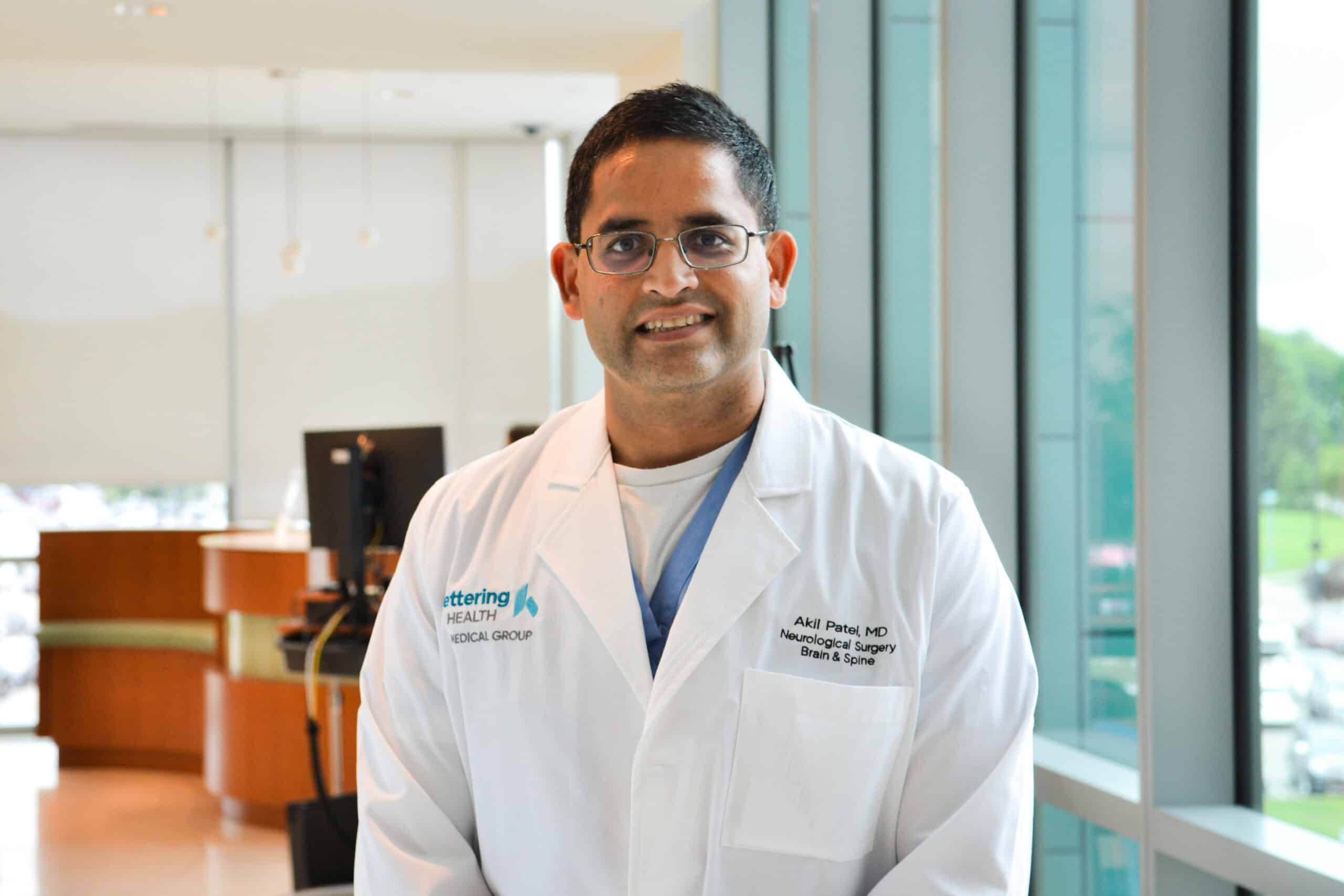Brain and Spine Care
Want to learn more about this at Kettering Health?
At a Glance
Q: Why are women at higher risk for stroke?
A: Women face unique stroke risks from pregnancy, birth control, and hormone therapy. Recognizing symptoms early is critical for treatment.
- Pregnancy and hormonal changes increase clotting risk.
- Birth control and smoking raise stroke risk.
- Women’s symptoms can be mild, like fatigue or confusion.
Did you know that women ages 20 to 39 are twice as likely to have a stroke than men the same age? They also tend to be more severe in women.
“Unfortunately,” Dr. Akil Patel, a neurosurgeon, says, “more women die of stroke.”
Women have unique risk factors that make them more at risk for stroke. And because women’s stroke symptoms tend to be milder, it often takes three times longer than men for them to receive care.
Dr. Patel explains stroke risk factors and symptoms for women.
Risk factors
One of the most significant stroke risk factors for women is pregnancy.
Fluctuating hormones and fluids during pregnancy increase the chances of blood thickening and clotting, which can cause a stroke. The risk increases if a woman develops preeclampsia.
A woman’s risk continues in the days after delivery.
“The body is trying to figure out its new normal,” Dr. Patel says, “so patients can have persistent hypertension during that time. That could put a big strain on their brain.”
Another unique risk factor is taking oral contraceptive (birth control) pills. While rare, hormonal birth control pills can cause blood to thicken and clot. Dr. Patel encourages women on the pill to stay hydrated and avoid smoking to reduce their risk for stroke.
Hormone replacement therapy, often taken post-menopause, can also increase a woman’s risk for blood clotting and stroke.
Besides hormonal risk factors, Dr. Patel shares that women who experience migraines with aura or have AFib also have a higher stroke risk than men with the same conditions.
Stroke symptoms in women
The most common symptoms of stroke, regardless of gender, are
- Slurred speech
- Facial drooping
- Weakness on one side of the body
“In women,” Dr. Patel says, “sometimes it’s not that drastic.”
Symptoms more commonly seen in women include
- Generalized weakness/fatigue
- Disorientation
- Mental status change
If you notice any of these symptoms, call 911 or go to your nearest emergency department.
Don’t wait
The sooner you receive care, the more treatment options are available.
“We’ve got so much to offer now,” Dr. Patel says. “But we can’t do it if it goes hours and hours to where the brain has already sustained irreversible damage.”
Understanding your risk and recognizing symptoms increases your chances of catching a stroke early and reversing the damage done to your brain.











